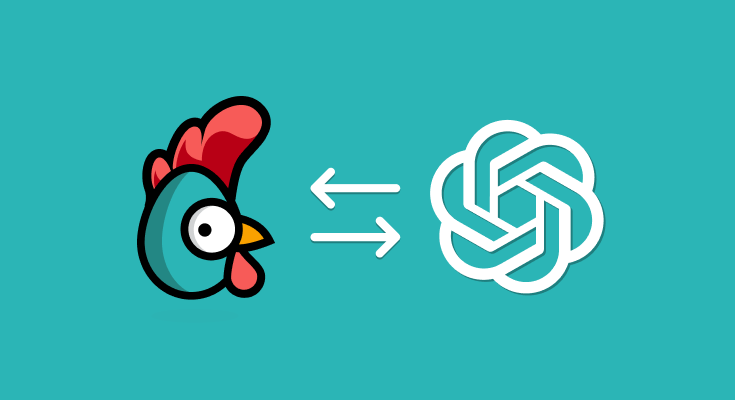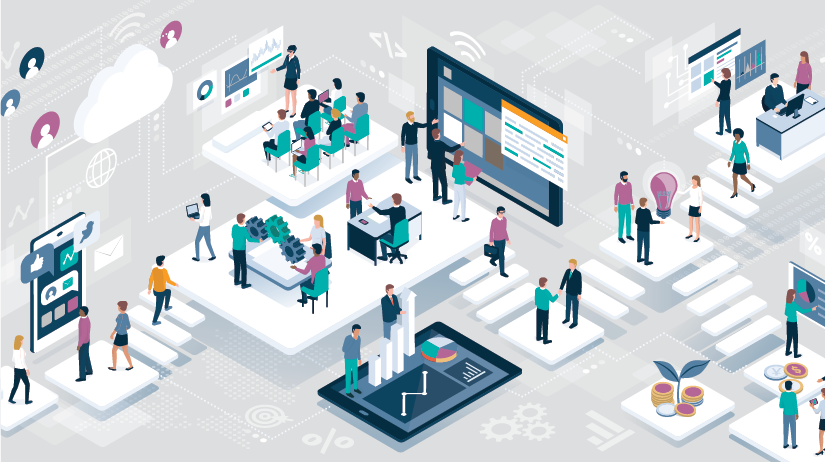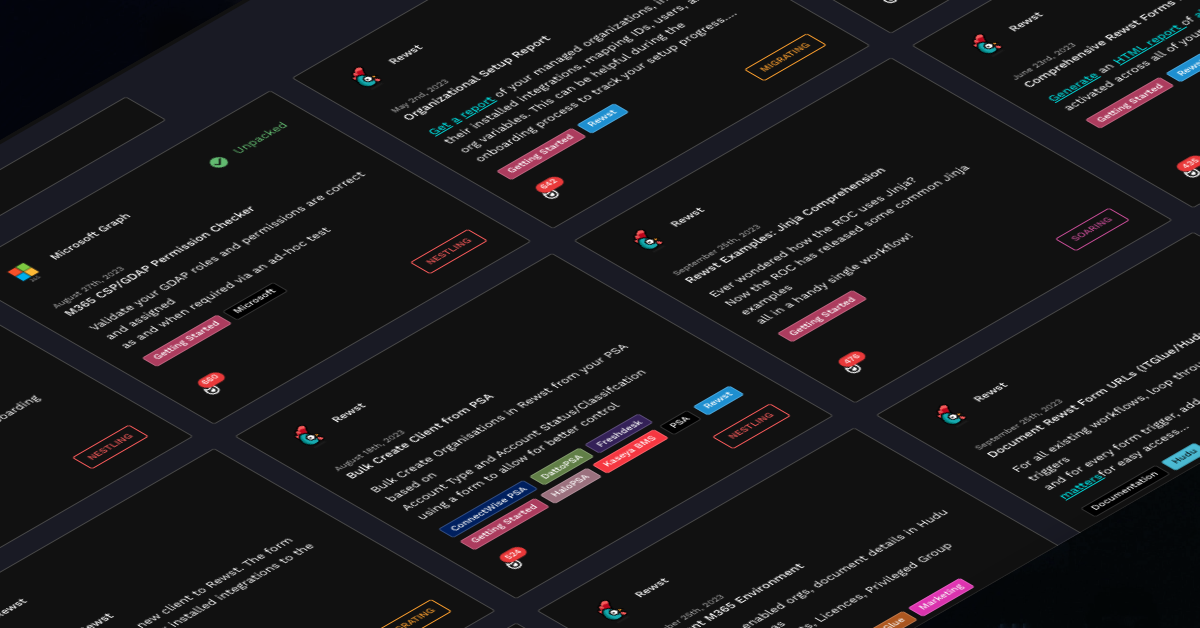The future of RPA in MSP operations: Lessons learned from 2024 for 2025

If you run an MSP, you’ve likely noticed a shift. Automation moved from the back office to center stage, driving strategies for growth, client satisfaction, and differentiation. The future of RPA is here, and 2024 shaped much of what’s next.
Last year, MSPs leaned into robotic process automation (RPA) to do more than save time—they used it to transform how they deliver value. You built self-service portals, introduced automation as a service, and evolved faster than your Monday morning ticket queue.
At Rewst, we’ve watched you use RPA to redefine your roles as service providers. You no longer rely on automation just for efficiency—you now use it to deliver consistent results, stand out in a crowded market, and expand your service offerings.
As we enter 2025, it’s important to recognize how the future of RPA affects your MSP. Keeping automation at the forefront of your business initiatives impacts client relationships, unlocks revenue, and helps you remain competitive.
Let’s dive in. The road to 2025 starts here.
The state of RPA in 2024: Laying the groundwork for the future
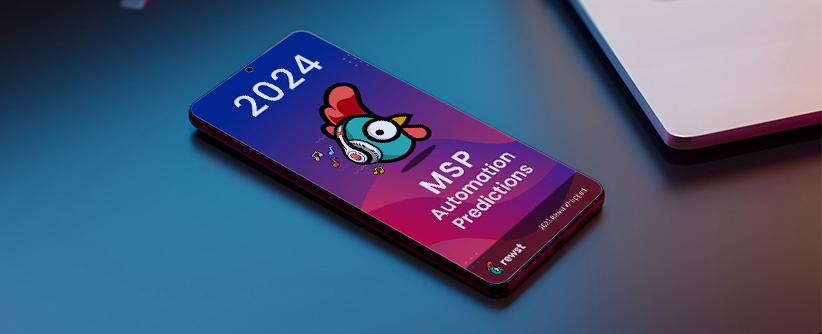
In 2024, MSPs took automation to the next level. What started as a tool for saving time evolved into a strategy for driving innovation, delivering value, and creating measurable outcomes. Rewst CEO Aharon Chernin’s predictions painted a bold vision for automation, and MSPs stepped up to make it a reality.
Shifting from efficiency to value propositions
Aharon predicted that MSPs would move beyond saving time and use automation to transform their value propositions. Microtime made this prediction a reality by automating AR workflows, recovering $22,147 in six months. Their co-managed client workflows saved 6–8 hours daily, enabling a $13,000/month client relationship.
These aren’t just impressive numbers—they prove that MSPs are turning automation into a competitive edge. By showcasing tangible outcomes, MSPs are positioning themselves as strategic partners, not just service providers.
Building self-service apps for touchless resolution
Aharon also foresaw the rise of self-service apps that enable clients to solve problems without submitting tickets or waiting on technicians. eTop Technology embraced this by creating a portal powered by Rewst’s App Builder.
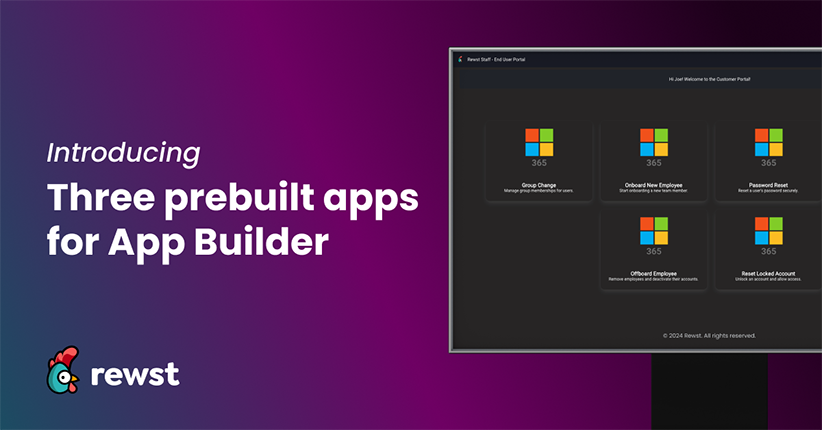
eTop clients can now manage password resets and mailbox updates through Microsoft 365 automations, eliminating the need for support tickets. Additionally, eTop leveraged Rewst to improve the client offboarding experience.
Their system proactively addressed inactive user risks, boosting security and reducing manual processes. By leveraging self-service apps, MSPs like eTop aren’t just resolving issues faster—they’re changing how clients experience support.
MSPs break beyond onboarding and offboarding
In 2024, MSPs took automation beyond the basics, just as Aharon predicted. MSIT automated desktop image maintenance, slashing the time from 6–7 hours to just 1 hour. They also built Nerdio cost estimator workflows, saving 50–80 hours per cloud migration while giving clients critical insights to plan effectively.
These workflows demonstrate how MSPs go beyond routine tasks to deliver strategic, high-impact solutions that set them apart from the competition.
Mastering automation as a skill
In 2024, MSPs didn’t just implement automation—they mastered it. At Air IT, Workflow Wizard Charlie Carter led the creation of 380 workflows in Rewst, saving over 500 hours every month. By leveraging Cluck University, their team mastered advanced concepts like Jinja and API integrations, embedding OpenAI to build intelligent, adaptable workflows.
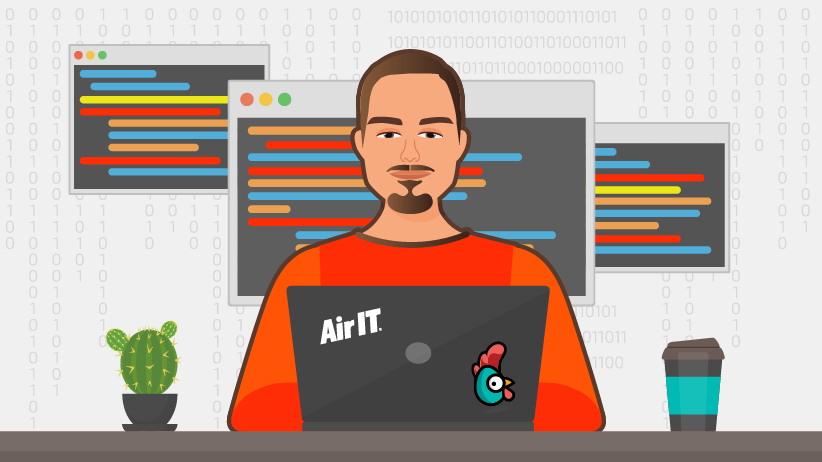
Air IT’s success shows that automation is more than a tool—it’s a skill MSPs can refine to deliver faster and more innovative outcomes. With the right expertise and platform, they turned automation into a true competitive advantage.
Making automation central to success
Aharon predicted that automation would become a core competency, and B4 Networks proved him right. They created ROI-driven workflows like their “business math” system, which evaluates the value of automations before implementation. By empowering technicians to propose and build their automations, B4 Networks fostered a culture of innovation and continuous improvement.
MSPs didn’t just adopt automation in 2024—they embedded it into their DNA. These successes aren’t just milestones but the foundation for what’s next. The future of RPA isn’t about doing more with less—it’s about rethinking what’s possible and delivering value that clients didn’t know they needed.
Trends and predictions for 2025: The future of RPA in action
With 2024 in the rearview, MSPs face a turning point. Automation has already driven consistency, improved efficiency, and enhanced client satisfaction. As we move into 2025, MSPs must take automation further. The tools that saved time and streamlined processes in 2024 will now form the foundation for new business models. MSPs will use automation to deliver innovative client experiences, create recurring revenue streams, and redefine their competitive edge.
Automation as a strategic business model
In 2025, automation will evolve from an operational tool to a client-facing innovation driver. In the recent webinar, Aharon described this shift: “Automation as a service is the next big offering MSPs will use to stand out.” MSPs are no longer focusing solely on internal efficiencies. Instead, they are packaging automation as a service for clients, offering tailored solutions like self-service tools that resolve common issues without technician involvement.
Picture a client onboarding a new user. Instead of submitting a ticket and waiting for a resolution, they fill out a simple form in a branded portal. Automation handles provisioning accounts, assigning permissions, and notifying the team. This approach delivers faster results, enhances the client experience, and positions MSPs as forward-thinking partners.
MSPs like Sourcepass are already formalizing these offerings. Mark Calzone explained, “We’re creating a predictable pricing model around automation. This ensures we consistently deliver value while staying indispensable to our clients.” MSPs generate revenue by transforming automation into a recurring service while deepening their client relationships.
Redefining self-service
Automation elevates self-service tools from simple portals to fully interactive systems that provide real-time results.
Dave Blake described how his team redefined client interactions: “We’re building client-facing portals that don’t just submit requests—they resolve them instantly. This shift isn’t about convenience; it’s about setting a new standard for service.”
Recent innovations showcase how self-service apps are transforming client experiences. Gareth from Your IT Department shared in a Workflow Wednesday video how he used Rewst’s App Builder to create a custom client portal. This portal allows clients to perform tasks like password resets and user onboarding directly from their desktops, with workflows seamlessly handling approvals and execution in the background. Gareth’s focus on branding and usability ensures that clients use the portal and provide positive feedback on its efficiency and ease of use.
By embedding automation into self-service platforms, MSPs deliver app-like experiences that align with modern client expectations. The result is faster resolutions, improved satisfaction, and a competitive advantage that’s difficult to replicate.
Expanding RPA beyond IT
In 2025, the future of RPA is reaching beyond the service desk, transforming financial and operational workflows. Marcus Networking provides a standout example.
Manually reconciling vendor bills with client contracts consumed 40 hours monthly. Using Rewst’s pre-built API integrations, Marcus Networking automated the process, enabling real-time billing reconciliation across tools like Autotask and Datto RMM with a single click.
This automation saves over $120,000 annually, including $100,000 in recovered license revenue and $1,500 per month in labor costs. It also reduces billing inquiries by 10–15%, improving efficiency and accuracy.
By automating critical processes, MSPs free up resources, enhance client outcomes and position themselves for growth. Financial workflows like these showcase how RPA delivers value beyond traditional IT tasks.
For more examples, explore the Automation Lookbook.
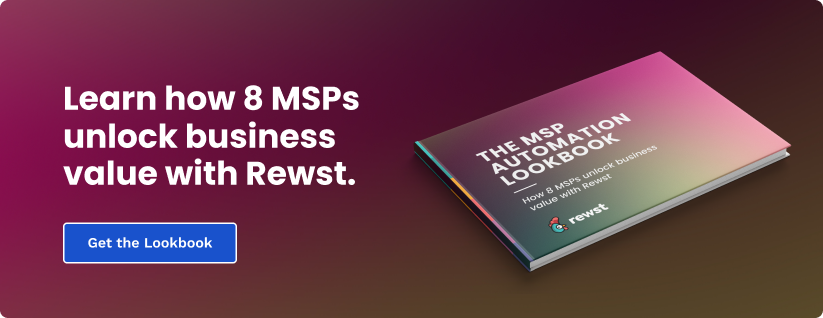
Specializing through vertical automation
Vertical-specific automation is another critical trend for 2025. MSPs serving industries like healthcare, banking, and legal are creating tailored solutions that address unique challenges.
By focusing on niche markets and solving specific problems, MSPs deepen client relationships and establish themselves as indispensable experts. This strategy enables growth in sectors where automation delivers measurable, transformative results.
As 2025 approaches, automation offers MSPs opportunities to reshape how they deliver value, drive growth, and differentiate their services. MSPs who adopt forward-thinking strategies and maximize RPA’s potential will set a new standard for the industry.
How MSPs can prepare for 2025
Success in 2025 won’t come from simply adopting automation—it will require leveraging it with precision and purpose. MSPs who thrive will go beyond basic implementation and integrate automation as a foundational strategy. To prepare, you must invest in your people, processes, and platforms while focusing on long-term goals.
Foster a culture of automation
Automation succeeds in organizations where leadership prioritizes it as a strategic initiative and technicians receive the time and resources to build and refine workflows.
Encourage collaboration across departments. Help teams see that automation removes repetitive tasks, allowing employees to focus on high-value work instead of routine processes. Use metrics to show the impact of automation and drive adoption. When people understand the results, they embrace change.
Prioritize high-impact automations
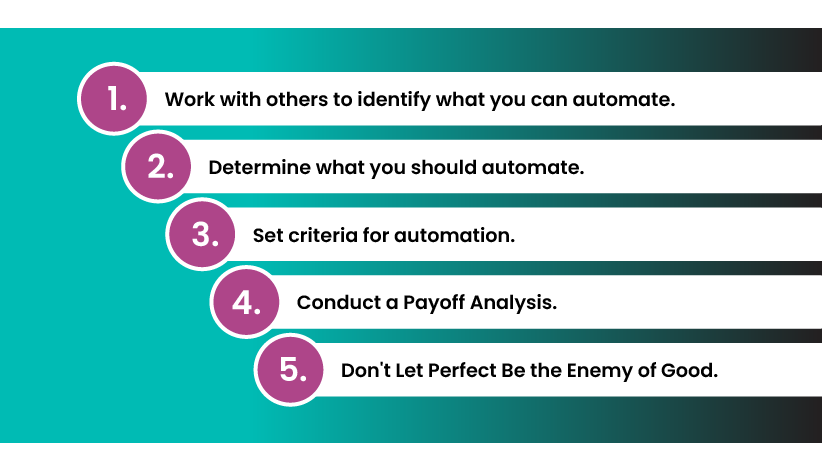
Focus on workflows that deliver measurable value, such as reducing technician time on repetitive tasks or improving SLA performance. Evaluate processes using a simple ROI analysis: target those that require minimal effort to automate but produce significant time or cost savings.
Leverage open, flexible platforms
Choose platforms that integrate seamlessly with your existing tools. Rewst’s open architecture connects your PSA, RMM, and documentation systems of choice while allowing for custom integrations and workflows. This flexibility ensures your automation strategy remains scalable and adaptable to future needs.
Paving the way for the future of RPA
The calendar is turning, and with it comes a chance to rethink your MSP’s operations. Automation took significant strides in 2024, helping MSPs simplify processes and deliver consistent results. Now, 2025 presents the opportunity to take those efforts further, refining strategies and expanding automation’s role in your business.
As you look ahead to 2025, focus on what matters most: building a culture that embraces innovation, tackling workflows that bring measurable impact, and choosing platforms like Rewst that grow with you. Your decisions will define how you serve clients, scale your business, and set yourself apart in a competitive industry.
So, as you raise a glass (or maybe just a coffee mug) to 2025, ask yourself: How will you leverage automation to do more, serve better, and thrive in the year ahead? Now is the time to take the first step.
Want to find out more about how MSPs can differentiate in 2025?
Watch the on-demand webinar
Latest Blog Posts
Subscribe to Our Blog
Stay up to date with the latest on our platform, automation, events and news.
We're committed to your privacy. Rewst uses the information you provide to us to contact you about our relevant content, products, and services. You may unsubscribe from these communications at any time.

